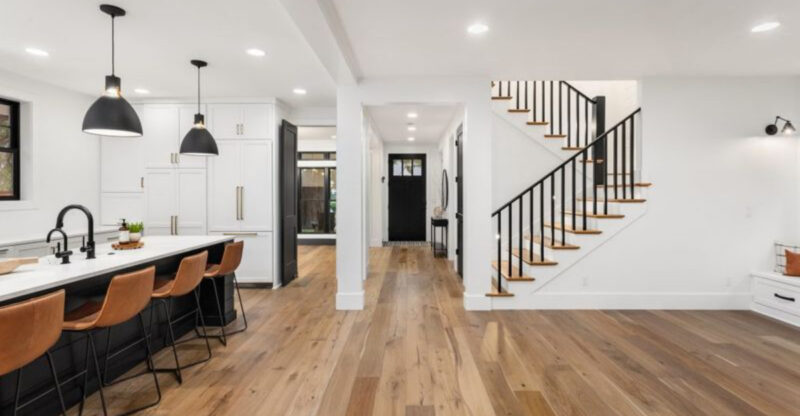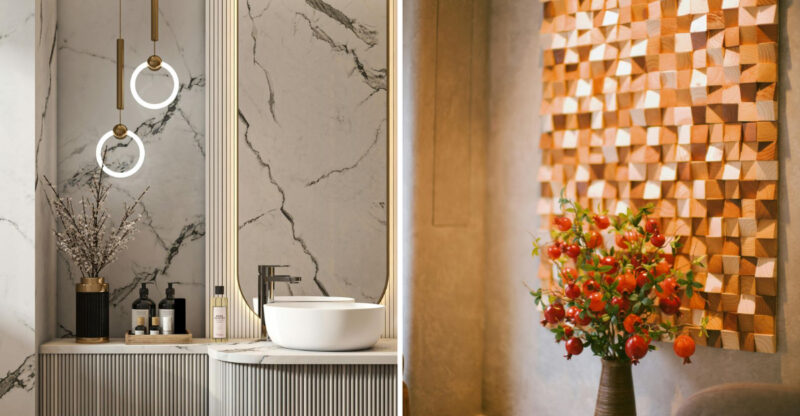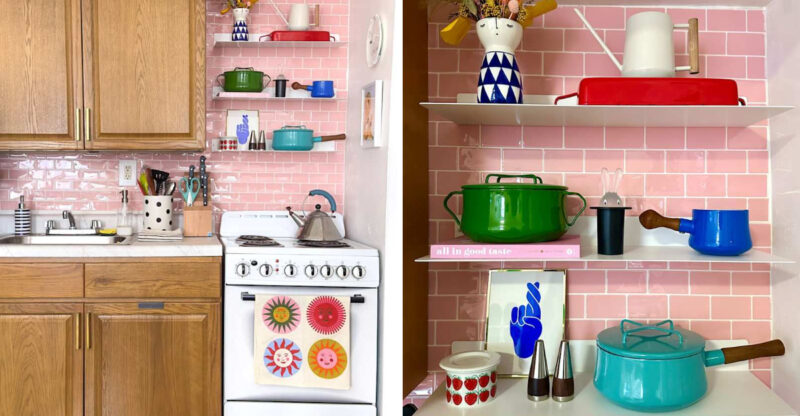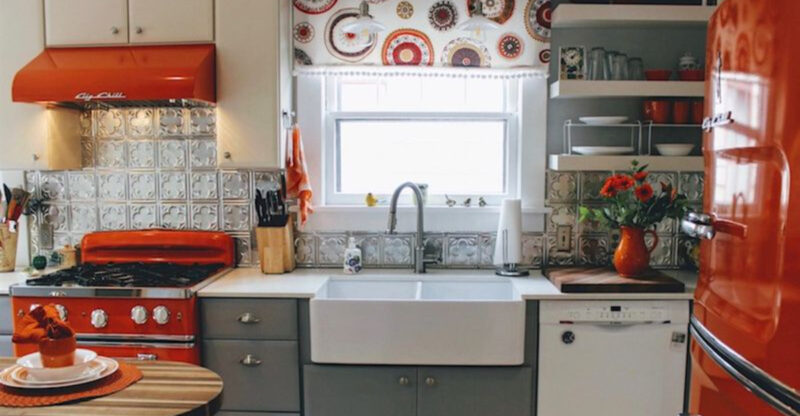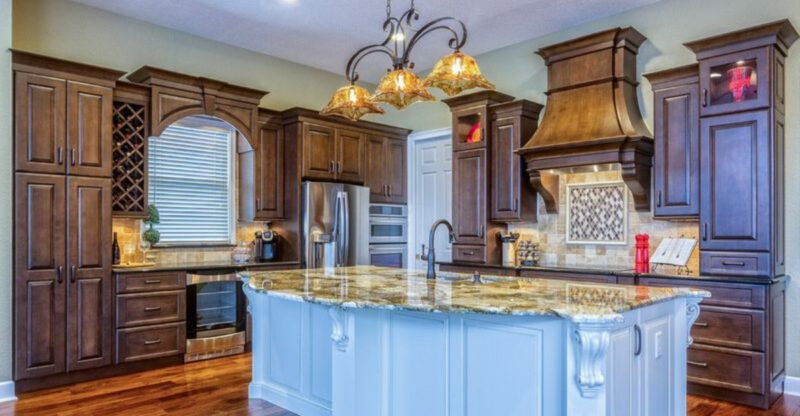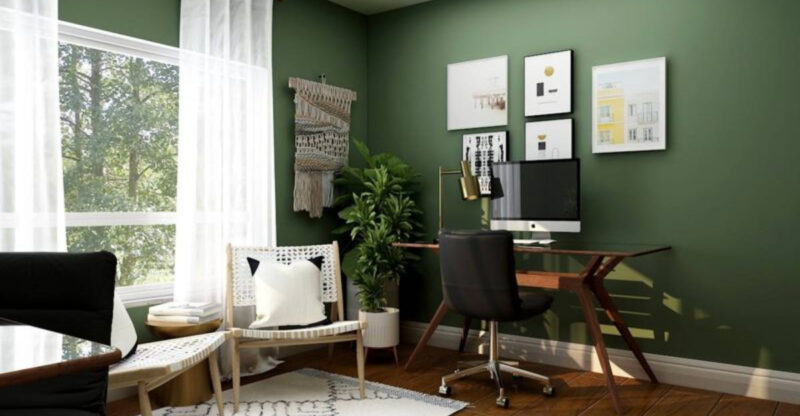Designers In Washington Say Goodbye To These 9 Kitchen Trends And Hello To These 9
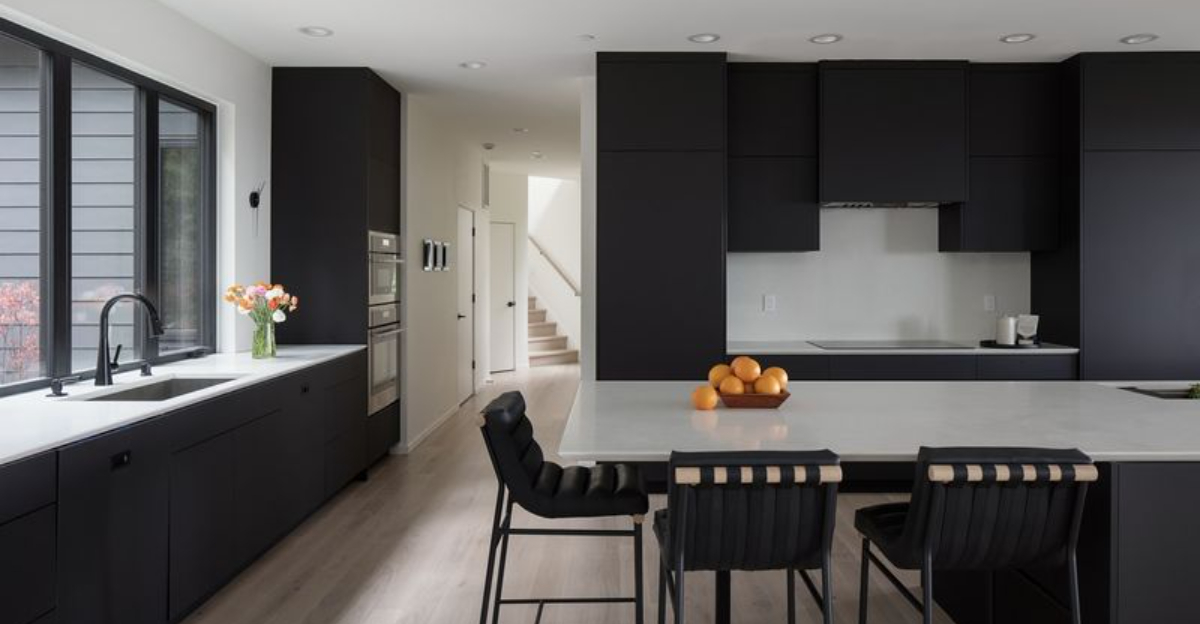
Kitchen design is constantly evolving, especially in Washington where homeowners embrace fresh styles that blend functionality with aesthetics.
Local designers have noticed a clear shift away from certain dated looks toward more contemporary and timeless options.
Whether you’re planning a complete renovation or just a simple update, knowing which trends are fading and which are gaining popularity can help you create a kitchen that feels current for years to come.
1. Dark Espresso Cabinets
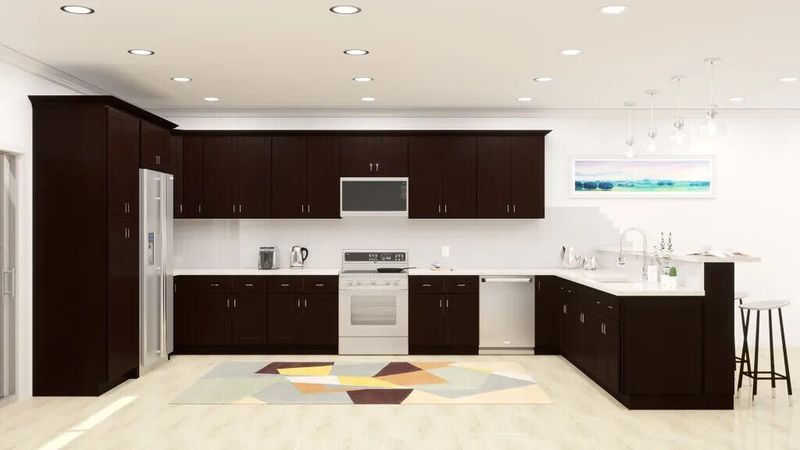
Once the hallmark of luxury kitchens, dark espresso cabinets are falling out of favor with Washington homeowners. These deep chocolate-toned cabinets that dominated the early 2000s now make spaces feel smaller and more dated than ever.
Many designers point out that these dark finishes show dust and fingerprints mercilessly, requiring constant maintenance. The heavy look also tends to absorb light rather than reflect it, creating kitchens that feel cave-like and gloomy, especially during Washington’s notoriously gray winter months.
If you’re stuck with espresso cabinets, consider painting them or replacing just the doors as a cost-effective update that instantly brightens your space.
2. Heavy Granite Counters

Bulky, speckled granite countertops are being shown the door by Washington designers. Those busy brown and beige slabs with gold flecks that seemed so impressive in the 2000s now feel visually overwhelming and dated.
Homeowners are tired of the high maintenance these natural stone surfaces require, including regular sealing to prevent staining. The visual weight of traditional granite, particularly the darker varieties with heavy patterns, can make even spacious kitchens feel cluttered and chaotic.
For those still attracted to natural stone’s uniqueness, designers suggest looking at honed or leathered finishes instead of the glossy polished look, which offers a more subtle, contemporary appearance.
3. Overly Ornate Backsplashes
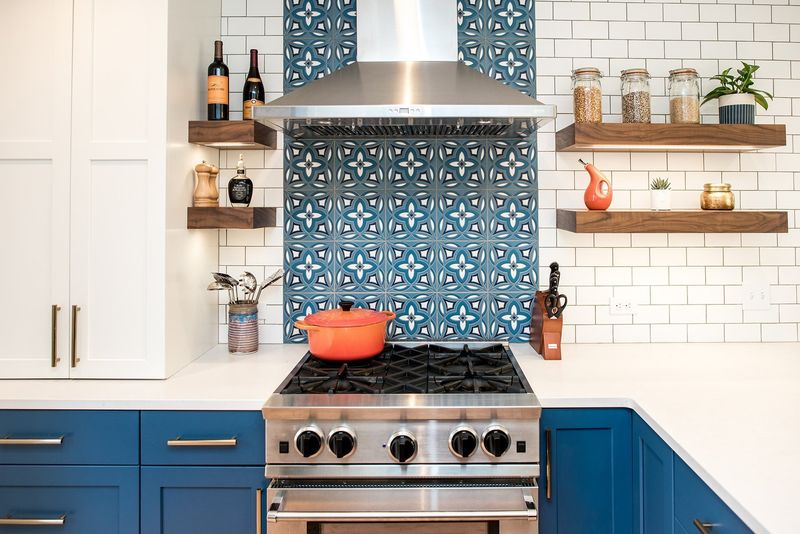
Goodbye to those busy, multi-colored mosaic backsplashes that scream early 2000s. Washington designers report homeowners are abandoning complicated tile patterns with multiple materials, medallions, and accent pieces that create visual chaos.
These elaborate installations not only date a kitchen instantly but also compete with other design elements for attention. The intricate patterns collect grease and are notoriously difficult to clean, with grout lines that quickly discolor despite regular maintenance.
Many homeowners who invested heavily in these statement backsplashes are now finding they tire of the busy aesthetic much faster than anticipated, leading to costly replacements long before the materials have worn out.
4. Tuscan Color Schemes
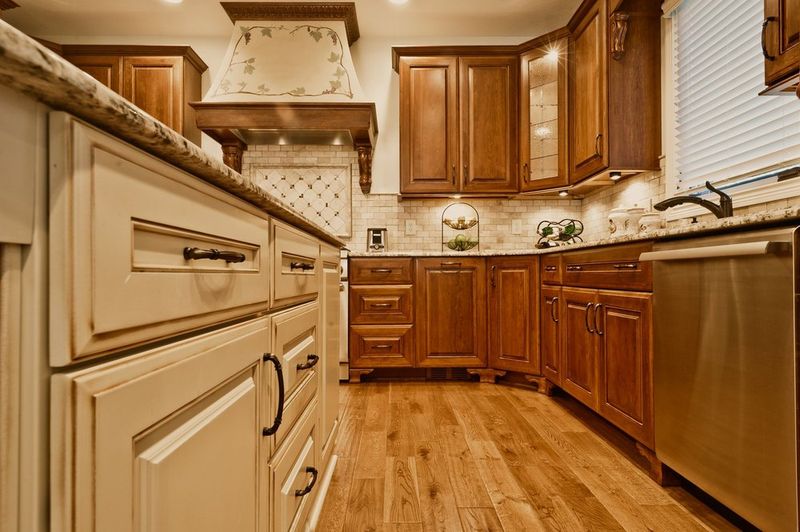
The faux-Mediterranean palette that dominated Washington kitchens is officially on its way out. Those terracotta oranges, olive greens, and mustard yellows inspired by Italian villas no longer appeal to homeowners seeking cleaner, more timeless aesthetics.
Designers note that these warm, saturated colors often feel heavy and artificial, especially in the Pacific Northwest’s natural light. The Tuscan trend frequently incorporated faux finishing techniques like sponging and glazing that added to the dated appearance and collected dirt in the textured surfaces.
If you still appreciate Mediterranean warmth, designers suggest incorporating it through natural wood tones and accessories rather than permanent elements like wall color or cabinetry that are expensive to change.
5. Massive Kitchen Islands
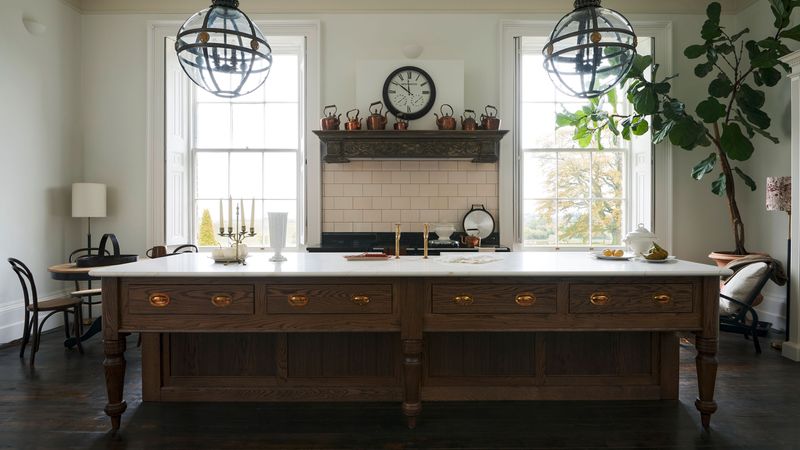
Those enormous, furniture-like kitchen islands that dominated Washington homes are losing favor fast. Designers report homeowners are rethinking these oversized centerpieces that often feature ornate corbels, two-tier countertops, and built-in wine racks that collect dust.
While functional workspace is still prized, these massive structures frequently create awkward traffic flow and feel disproportionate in all but the largest kitchens. Many of these islands were designed more for show than practicality, with decorative elements that compromised usable space and made cleaning difficult.
Washington homeowners are now realizing that an appropriately sized island that allows for comfortable movement around the kitchen actually makes the space more functional and visually appealing.
6. Traditional Raised-Panel Cabinets
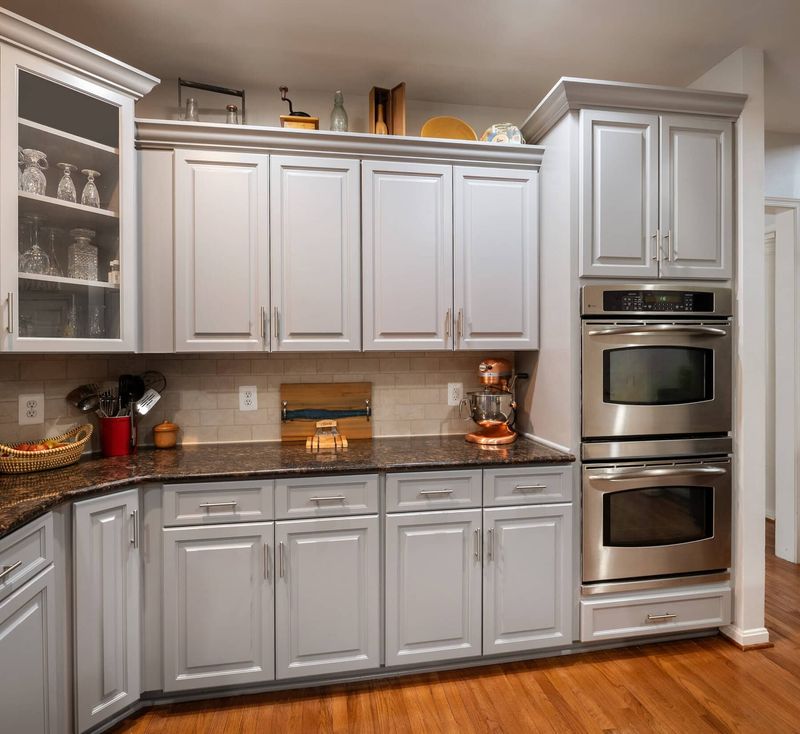
Heavy, traditional raised-panel cabinet doors with ornate molding and detailed profiles are rapidly disappearing from Washington kitchens. These fussy cabinet fronts with their multiple grooves and edges were once considered the gold standard of kitchen luxury.
Homeowners are increasingly frustrated by how these detailed profiles trap grease and dust, making cleaning a time-consuming chore. The dimensional design creates shadows and visual weight that can make even well-lit kitchens feel dark and dated, particularly in homes with lower ceilings.
For those not ready to replace cabinets entirely, designers suggest removing some upper cabinets to install open shelving or painting existing cabinetry in lighter colors to minimize the heavy traditional feel.
7. Glossy Finishes
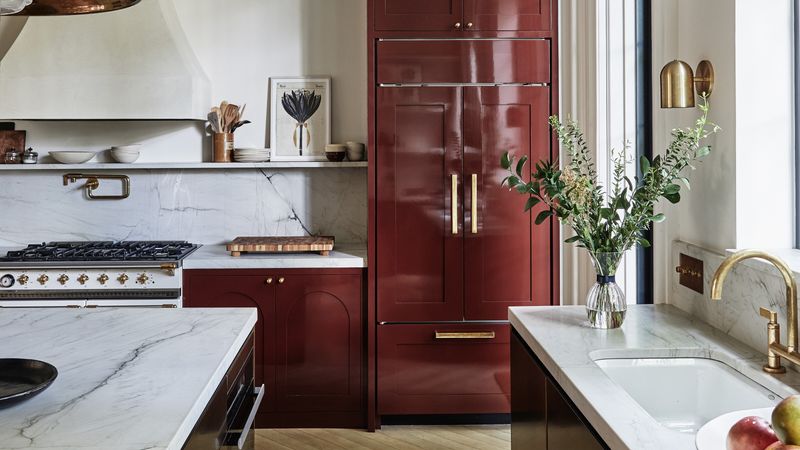
High-shine surfaces are losing their luster in Washington kitchens. Those ultra-glossy cabinet finishes, shiny appliances, and polished countertops that were once considered the epitome of luxury are now seen as high-maintenance and visually harsh.
Designers point out that these reflective surfaces show every fingerprint, water spot, and smudge, requiring constant cleaning to maintain their intended look. The intense reflectivity can create uncomfortable glare, particularly in kitchens with abundant natural light or extensive recessed lighting commonly found in newer Washington homes.
Many homeowners who initially chose these finishes for their perceived easy-clean properties have discovered the opposite is true – glossy surfaces may wipe clean easily, but they need cleaning far more frequently than their matte counterparts.
8. Overhead Pot Racks
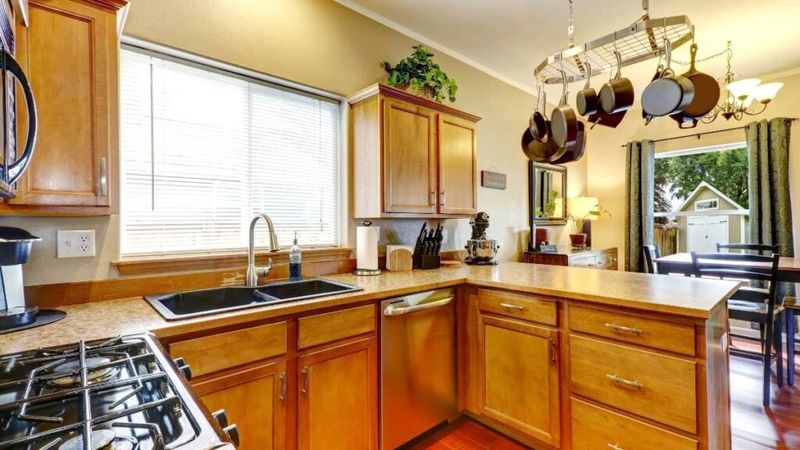
Hanging pot racks suspended from ceilings are being taken down across Washington kitchens. These statement pieces that once showcased copper and stainless cookware collections are now viewed as dust collectors that create visual clutter overhead.
Designers note that most homeowners rarely used all the displayed items, resulting in pots and pans that simply gathered grease and dust. The hanging racks often blocked sightlines in open concept layouts and made ceilings feel lower, a particular concern in many Pacific Northwest homes with standard-height ceilings.
Instead of displaying cookware as decoration, Washington homeowners are embracing more practical storage solutions that keep frequently used items accessible but not necessarily visible, maintaining cleaner visual lines throughout the kitchen.
9. Busy Mosaic Tile Patterns
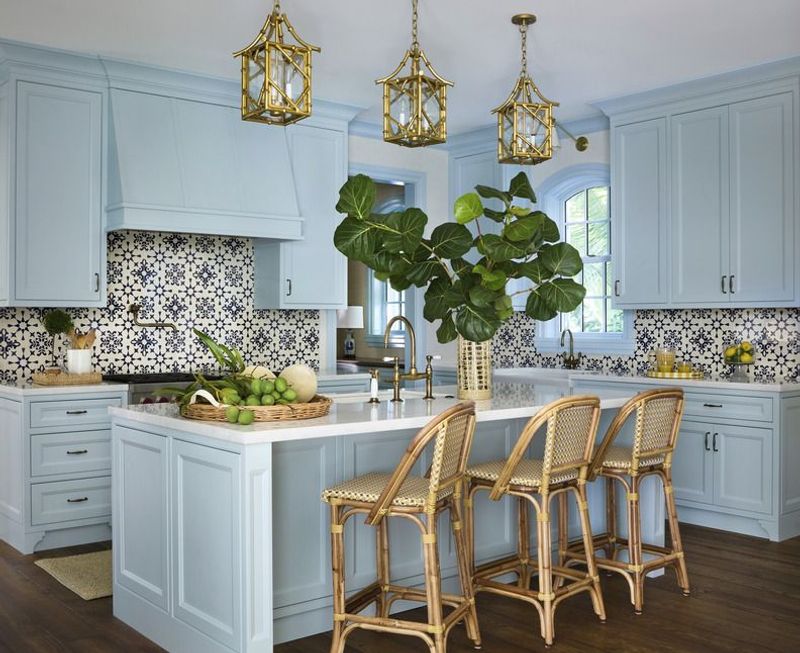
Multi-colored, random-pattern glass mosaic tiles are being stripped from Washington kitchens at record rates. These tiny tiles that were once considered artistic and high-end now read as chaotic and visually exhausting to many homeowners.
The small tiles create extensive grout lines that quickly become discolored, especially behind cooking areas where grease and splatter are inevitable. Designers note that these intricate installations often competed with other design elements, making it difficult to create a cohesive look throughout connected spaces.
Homeowners who invested in these elaborate mosaics frequently report feeling tired of the busy aesthetic much faster than anticipated, leading many to replace them despite the considerable expense and disruption of removing the well-adhered tiny tiles.
10. Soft Neutral Cabinets

Gentle cream, soft gray, and muted sage cabinets are taking center stage in Washington kitchens. These versatile neutrals create an airy, open feeling that perfectly complements the region’s natural environment and works beautifully with the often limited natural light.
Homeowners appreciate how these softer hues show less dust and fingerprints than both their darker and white counterparts. The subdued palette also provides a timeless foundation that allows for seasonal updates through changeable elements like textiles and accessories without committing to trendy colors that might quickly feel dated.
Many Washington designers recommend these middle-tone neutrals particularly for open-concept homes, as they transition smoothly between spaces and create visual continuity throughout the main living areas.
11. Quartz Countertops
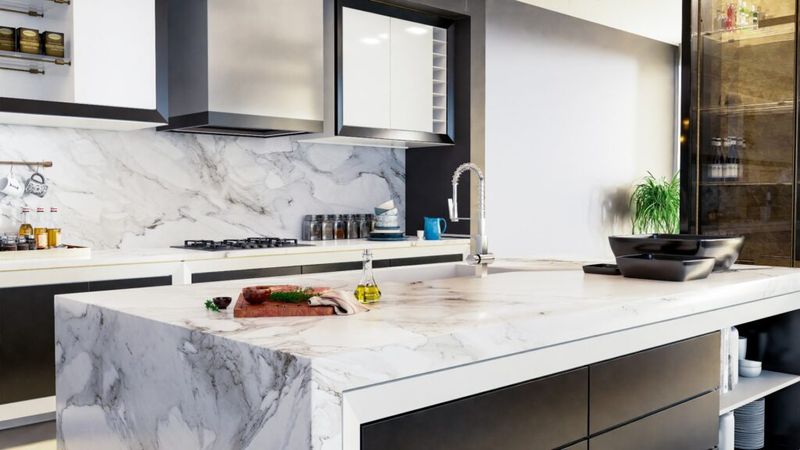
Engineered quartz surfaces have become Washington’s countertop material of choice. These durable, non-porous surfaces offer the aesthetic appeal of natural stone without the maintenance headaches, a practical consideration in busy family kitchens.
Homeowners are particularly drawn to quartz varieties that mimic the look of marble with subtle veining rather than the speckled patterns popular in earlier decades. The material’s resistance to staining makes it ideal for Washington’s coffee and wine enthusiasts, while its durability stands up to the region’s enthusiastic home cooks.
Designers highlight that beyond practical benefits, quartz offers consistent patterning that creates a cleaner, more contemporary look than the often unpredictable variations found in natural stone, allowing for more precise design planning.
12. Subtle Backsplash Designs
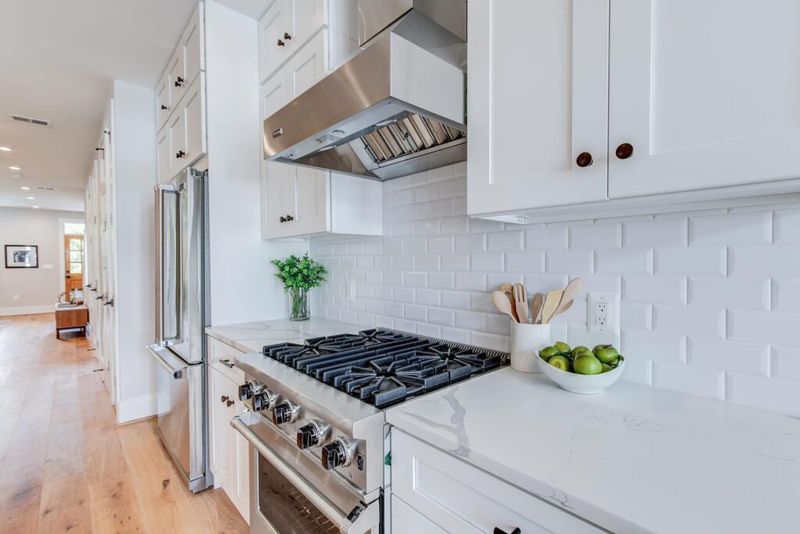
Refined, understated backsplashes are winning hearts across Washington kitchens. Large-format tiles, single slabs, and simple subway patterns in neutral tones create clean backdrops that complement rather than compete with other design elements.
Homeowners are embracing these simpler installations for their timeless appeal and easier maintenance, with fewer grout lines to clean and seal. Many are choosing handmade ceramic tiles that offer subtle variation in tone and texture, adding warmth and character without the busy patterns of previous trends.
Washington designers note that these quieter backsplashes allow statement elements like range hoods or unique light fixtures to shine while creating a more relaxing visual environment – particularly important in open-concept homes where the kitchen is visible from living spaces.
13. Warm Natural Wood Accents
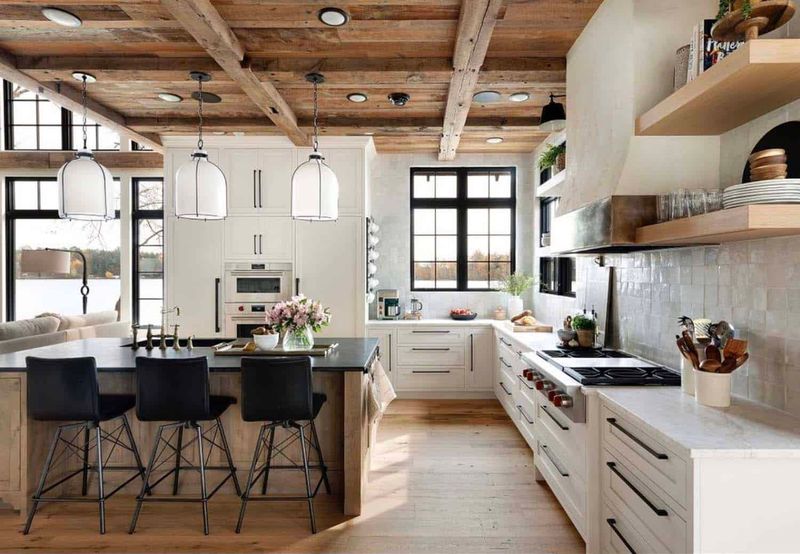
Natural wood elements are making a significant comeback in Washington kitchens. Homeowners are incorporating warm wood tones through open shelving, furniture-style islands, and accent details that add organic texture to contemporary spaces.
This trend reflects the Pacific Northwest’s connection to its forested landscape and appreciation for craftsmanship. Designers note that unlike the uniform stained woods of past decades, today’s wood elements celebrate natural grain patterns and often mix different species for a collected, evolved look.
Many Washington residents are specifically seeking locally sourced or reclaimed woods that tell a story and reduce environmental impact – values that align with the region’s sustainability mindset while creating kitchens with authentic character that mass-produced elements simply can’t match.
14. Sleek Minimalist Islands
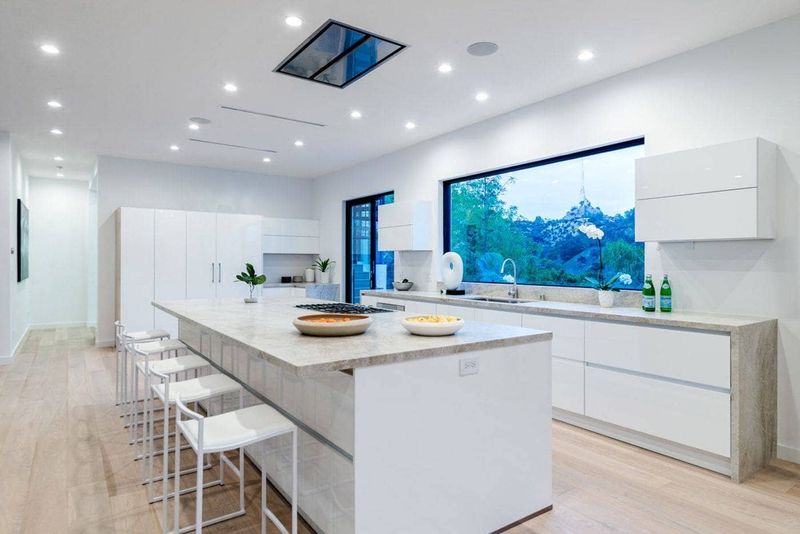
Streamlined, functional kitchen islands are the new focal points in Washington homes. These clean-lined workspaces prioritize usefulness with simple waterfall edges or straight profiles rather than decorative details that interrupt visual flow.
Homeowners appreciate islands that offer abundant storage through full-depth drawers and cabinets while maintaining a light appearance with cantilevered countertop extensions for casual seating. Many Washington designers are creating distinctive islands through contrasting materials – perhaps using a different cabinet color or countertop material than the perimeter to create interest without fussiness.
The trend toward simpler islands reflects a broader shift toward kitchens that feel less like showplaces and more like hardworking spaces where family and friends can gather comfortably without navigating around unnecessary decorative elements.
15. Flat-Panel Cabinet Doors
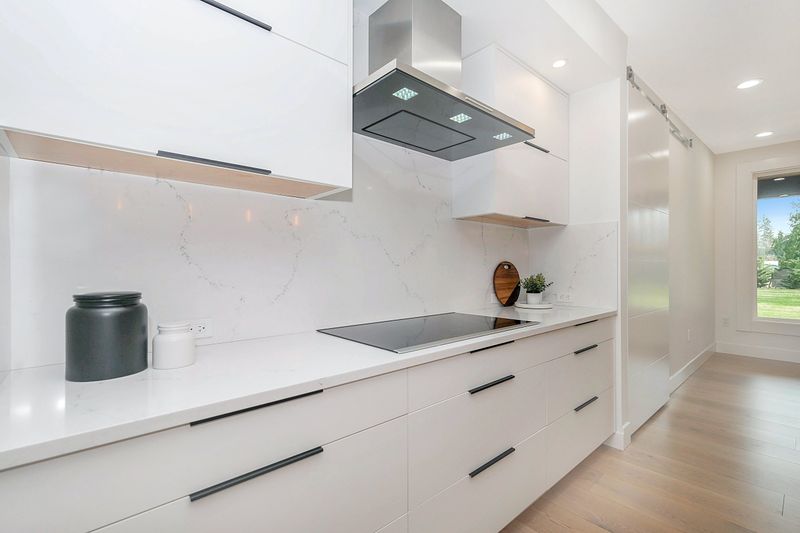
Clean-lined, flat-panel cabinet doors are dominating Washington’s kitchen renovations. These simple door styles, whether completely flat (slab) or with minimal framing (Shaker-inspired), create a timeless look that works in virtually any design aesthetic from modern to transitional.
Homeowners are drawn to these streamlined doors for their easy maintenance, with no detailed grooves to trap dust and grease. Many are opting for subtle details like integrated handles or finger pulls that maintain the clean lines while adding functional interest.
Washington designers note that these simpler door styles create a perfect backdrop for statement hardware or distinctive countertops, allowing individual elements to shine without creating visual competition that can make spaces feel busy and dated.
16. Matte Finishes
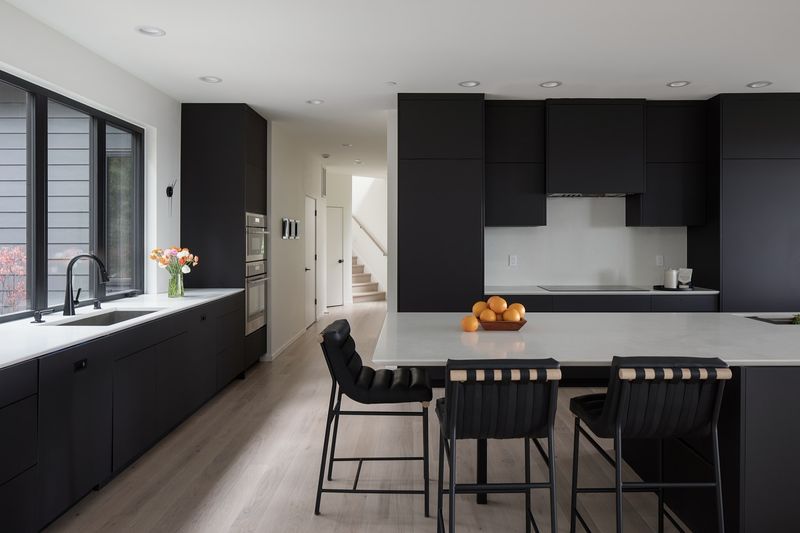
Soft, matte finishes are taking over Washington kitchens, from cabinets to countertops and appliances. These low-luster surfaces offer a sophisticated, understated look that hides fingerprints and water spots far better than their glossy counterparts.
Homeowners appreciate how these non-reflective finishes create a more relaxed atmosphere without harsh light reflections. The tactile quality of matte surfaces adds a subtle sensory dimension to kitchen elements that are frequently touched, creating a more inviting environment.
Washington designers particularly recommend these finishes for larger kitchen elements like refrigerators and cabinetry, as they visually recede rather than dominate the space, allowing the room’s architecture and natural light – a precious commodity in the Pacific Northwest – to take center stage.
17. Integrated Storage Solutions
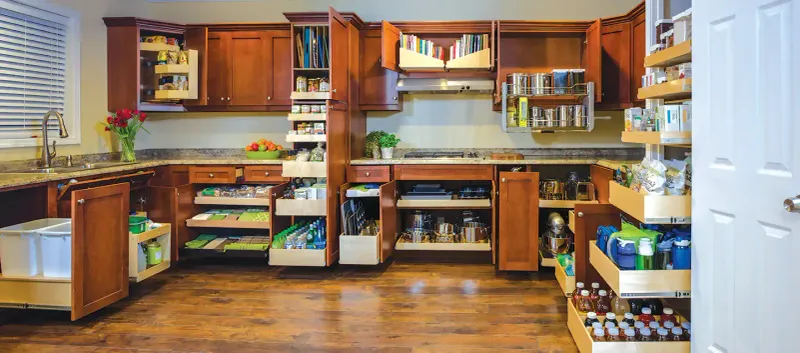
Thoughtful, built-in storage systems are revolutionizing Washington kitchens. Homeowners are embracing specialized organization features like vertical dividers for baking sheets, deep drawers with peg systems for dishes, and dedicated stations for coffee or breakfast items.
This trend reflects a desire to maximize functionality in every square inch rather than simply having more space. Many Washington designers are creating custom solutions for their clients’ specific needs perhaps a dedicated area for pet supplies or specialized storage for outdoor entertaining gear that reflects the region’s indoor-outdoor lifestyle.
The focus has shifted from displaying collections to concealing them behind well-designed cabinet interiors, resulting in kitchens that feel serene and uncluttered while still containing all the tools and ingredients needed for everyday cooking and entertaining.
18. Calm Monochrome Palettes
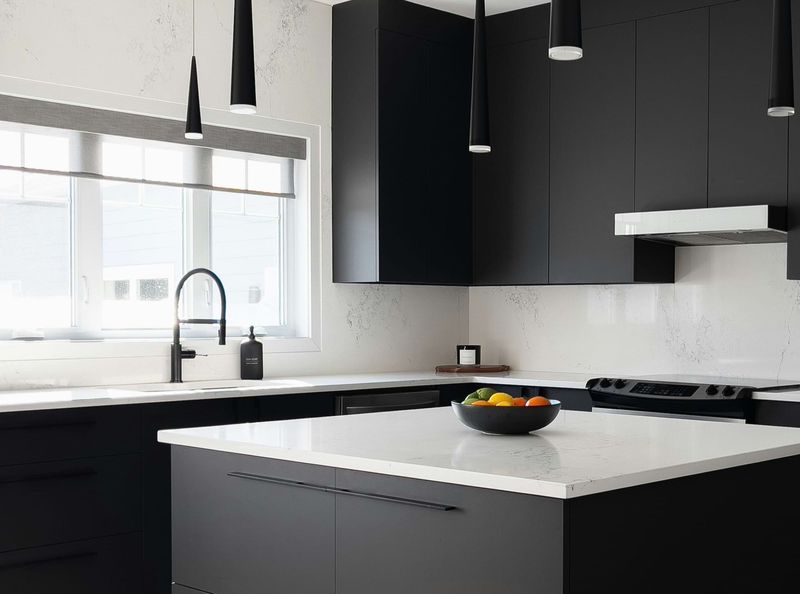
Serene, tone-on-tone color schemes are creating peaceful kitchen environments throughout Washington. These sophisticated palettes use varying shades of a single color family – perhaps different intensities of blue-gray or warm taupe – to create depth without contrast that can feel jarring.
Homeowners are drawn to these cohesive color stories for their timeless quality and ability to create visual flow between connected spaces. Many Washington designers layer different textures within the same color family perhaps matte cabinets with a slightly more reflective backsplash in a similar hue – to add subtle interest without disrupting the calming effect.
This approach works particularly well in the Pacific Northwest, where the often gray natural light is complemented rather than competed with by these nuanced, understated color schemes.

